Disturbing Federal Data on Autopsies Conducted During the Spring 2020 New York City Mass Casualty Event
More reasons to wonder whether the death spike is real or engineered
Sudden changes to the number and proportion of autopsies conducted in New York City in spring 2020 raise more questions about what happened during the biggest mass fatality event in city history and why. The disturbing shifts and unusual characteristics in official federal data add to the growing body of circumstantial evidence that authorities are not telling the whole truth about the scale & nature of deaths, or the movement and treatment of bodies during the fatality spike.
Background
Autopsy conducted is one of many variables available for query in WONDER, the U.S. mortality data warehouse. Each death can only be associated with one autopsy status:
Yes (an autopsy was conducted),
No (an autopsy was not conducted), and
Unknown (there is no record showing if an autopsy was conducted).
Most deaths that occur in the United States are not autopsied. Prior to March 2020, roughly 10-14% of the 950-1200 resident deaths occurring each week in New York City were autopsied, 80-87% were not, and autopsy status reported unknown for 3-4%
Autopsy Status Data: Raw Numbers & Ratios
Similar to every time-series for New York I’ve evaluated thus far, we see nothing remarkable going on with the number or proportion of deaths autopsied in January or February 2020. There is no apparent “smoke signal” or sign of a “disturbance” involving a deadly novel pathogen spreading (Figure 1).
Figure 1: Autopsy Status of New York City resident deaths occurring weekly in weeks 2-12, 2020
After the federal government declared a national emergency, no autopsy and autopsy unknown deaths rose, and deaths with yes autopsy fell.
Table 1 shows the weekly raw numbers and percent change for weeks 12-22 in 2019 compared to 2020. Unknown rose slightly faster than no and peaked in the same week. Overall percent change from 2019 was higher for unknown than it was for no (305% vs 278%). Yes declined by one-third to two-thirds from baseline each weekly, with the steepest drop occurring later in the event (65% in Week 19).
Table 1: Autopsy Conducted, New York City Resident Deaths, Weeks 12-22: 2019 v 2020, Totals & Percent Change (CDC WONDER) | Supplemental Graphs
Most of the eleven-week death increase in deaths were not autopsied. No and unknown returned to baseline by the end of May, when the excess death event ends, whereas yes didn’t return to a normal level until late June (Figure 2). Smaller spikes in unknown and no (and drops in yes) were reported during subsequent waves of excess death but - like total deaths - never approached magnitude of the spring 2020 event.
Figure 2: Autopsy Status for New York City Resident Deaths Each Week, Jan 2018-Dec 2023
Figure 3 shows the six-year weekly ratios for autopsy status, including the dramatic shifts in March 2020. The proportion of deaths for which autopsy status was unknown continued to rise through 2023. The ratio of yes-to-no autopsies dropped again during the ‘Omicron” wave in late 2021/early 2022.
Figure 3: Weekly Ratio of Autopsy Status on Death Among NYC Residents, January 2018 - December 2023
Table 2: Weekly Ratio of Autopsy Status, NYC resident deaths, week 7 - week 31, 2020
The percent of weekly deaths autopsied fell to less than 1% as all-cause deaths peaked (Table 2).
The “official” explanation for autopsies coming to a near-halt was that forensic labs were closed during the emergency and staff reassigned to handle decedents sent directly from hospitals and nursing homes to city morgues. Even if that’s true, it’s hard to reconcile with refrigerator trucks sent by FEMA being underutilized as morgue storage and the National Guard providing additional manpower. (Plus, the OCME’s 11,000-death processing event in three days in remains unexplained, so I’m not ready to give the “we were overwhelmed” excuse the benefit of the doubt.)
Conducting fewer autopsies during any excess death wave seems like a disservice to public health, if not a dereliction of duty, especially in a city where the medical examiner’s work is shrouded in mystery. It is reasonable for taxpayers to expect the medical examiner to conduct a normal number - and near-normal proportion - of autopsies during an “outbreak” event.
Inverse Relationship Between Home Deaths Going Up and Home Death Autopsies Going Down
The most-autopsied deaths and highest proportion of autopsied deaths is those that occur at home. Deaths in private residences are more likely than deaths in a healthcare setting to happen suddenly, be unattended, involve a non-apparent cause, or involve drugs, suicide, or homicide.
Home deaths in New York increased 250% between mid-March and the end of April from 2019 (1,755 deaths versus 6,206 deaths). No rise is evident prior to federal declarations, but the level remained elevated over baseline through the end of 2020 (Figure 4).
Figure 4: NYC Resident Deaths Occurring Daily at the Decedent’s Home (All Causes), 1 Jan 2019 - 31 Dec 2020
Oddly, much of the drop in autopsies conducted involved deaths occurring at home (Figure 4; inverse relationship also depicted here), which fell 67% during weeks 11-22. Autopsies on emergency department/ outpatient deaths also went down albeit less significantly (-38%). Autopsies conducted on hospital inpatient deaths remained relatively stable, but the most autopsy unknown deaths occurred in hospitals as well, which I discuss in another section.
Figure 5: Weekly Deaths Among NYC Residents Occurring in Hospital Inpatient, Emergency Dept/Outpatient, and Home for Which an Autopsy Was Conducted, Jan 2018 - December 2020
People being (illegally) ordered to stay home could have meant more home deaths occurred when a household member or friend was present, the medical examiner would usually assume jurisdiction over home deaths in circumstances that don’t involve an expected death or that are suspected of a non-natural cause.1
However, other unsettling facts and reported events from the timeframe give many reasons to be concerned & ask questions about the drop in home deaths autopsied happening concurrent to a staggering increase in home deaths:
The spike was driven by a still insufficiently-explained out-of-hospital cardiac arrest (OHCA) event.2 A study of the event reported that cardiac arrests between March 1 and April 25 were “3.5 times more likely to present in asystole (OR, 3.50; 95% CI, 2.53-4.84; P < .001) and twice as likely to present in pulseless electrical activity (OR, 1.99; 95% CI, 1.31-3.02; P = .001) than in ventricular rhythms (ventricular fibrillation or ventricular tachycardia).” The authors also reported a 183% increase in arrest call patients who were dead upon ambulance arrival, a lower success rate for resuscitation, and low use of naloxone (opioid overdose-several drug), as compared to the same weeks in 2019. A failure to perform a number normal autopsies, if not a number commensurate with the cardiac event, has the appearance of trying to cover up undisclosed factors involved in a highly unusual event.
After heart-related causes, deaths that blamed COVID-19 were the next-leading cause of deaths at home. A home COVID death is questionable under any circumstances, yet New York City comprised 40% of all U.S. home COVID deaths in April 2020. This is egregiously disproportionate and wholly inconsistent with anything reported in any other state. At the time, media suggested that COVID deaths at home were undercounted — as though a coronavirus behaved like a bolt of lightning striking inside apartment buildings. The New York home death event hasn’t been critically probed by any journalists (mainstream or independent), as far as I can tell.
Curiously, drug overdose deaths at home did not increase much at all during these weeks, yet cocaine & fentanyl are among the causes that could “shock” the system such that an increase in cardiac arrest presenting in asystole could make sense.3 Of course, fewer autopsies being conducted doesn’t help would-be investigators get to the bottom of what happened.
Ambulance dispatch patterns changed: Total dispatches went up initially, as did refusals of medical aid (RMAs); meanwhile, ambulances transporting patients dropped. So, people were suddenly calling for help, help was being sent, but help was being refused (by paramedics or the patient), and fewer people were being taken to hospitals. Paramedics had been told to keep people away from hospitals and also received directives that discouraged them from giving full lifesaving measures to patients in cardiac arrest.4 Needless to say, such protocols coupled with a drop in autopsies conducted gives the appearance of protecting those who issued and carried out the ethically-questionable orders.
The National Guard was said to be assisting with body removal from homes and with processing decedents at morgues and the OCME reportedly went on a hiring spree. With more manpower, why couldn’t a normal number of autopsies be conducted?5
NYPD units show up to all incidents involving a person who dies on the scene. My records requests for the daily number of calls involving NYPD coming to the scene where someone had died is now months overdue, but an NYPD detective I spoke with said a) he saw no National Guard removing bodies from homes and b) medicolegal investigators from the OCME had stopped showing up to calls involving a person pronounced dead on the scene roughly two weeks into the emergency period (~very end of March beginning of April).6 He also questioned the legitimacy of the home death spike and said it was inconsistent with his experience in spring 2020.
Chicago (Cook County) did not experience a drop in autopsies conducted - or a spring 2020 home death event anywhere near the magnitude of New York’s - and didn’t report a high number of COVID-19 deaths at home. Unlike the medical examiner’s office in New York City, the Cook County Medical Examiner’s determinations are public and death records subject to FOIA. In other words, the Cook County ME’s office is far more accountable (in theory and by law) than the New York City ME’s office is.
The decrease in autopsies conducted on deaths at home is low as a raw number, the fact that it occurred simultaneous to & amidst a host of other odd events & data patterns casts suspicion over the drop.
Autopsy Unknown Deaths
Autopsy unknown deaths made up a relatively small proportion of all deaths reported during the event but are still cause for concern due to a) how much they increased from the previous year, b) the proportion of such deaths relative to the U.S., c) where the deaths occurred, and d) the number of deaths that list COVID-19 as underlying cause.
There were 432 autopsy unknown deaths during weeks 12-22 in 2019, versus 1,883 in the same weeks in 2020, for a 305% increase (Table 3).
Table 3: Raw number of New York City resident deaths for which there is no record showing if an autopsy was conducted, Week 12 - 22, 2019 and 2020, with weekly percent change from 2019 to 2020.
New York City’s proportion of autopsy unknown deaths is normally consistent with its population ratio, i.e. 2-3% of all such deaths in the U.S. The proportion rose to 17% in April (Figure 6). Shockingly, the NYC increase for autopsy unknown in weeks 12-22 of 2020 versus the same weeks in 2019 was 30% of the U.S. increase (Table 4).
Figure 6: Raw number of New York City resident deaths for which there is no record showing if an autopsy was conducted, Week 12 - 22, 2019 and 2020, with weekly percent change from 2019 to 2020.
Table 4: 2020 increase from 2019 in Weekly Deaths-Autopsy Unknown: U.S. vs New York City
Sixty-five percent (65%) of autopsy-unknown deaths list COVID-19 as underlying cause (n=1,226/1,883). Nearly all (95%) of those COVID-19 deaths are “COVID-only” deaths, i.e., the only cause listed is COVID-19, which means the associated death certificate or record is “incomplete” insofar as cause of death is concerned.
The timing of deaths with an unknown autopsy status rose and fell with the all-cause death peak. As shown in Figure 6, nearly all “autopsy unknown” deaths with COVID on the death certificate were COVID-only deaths in the first three weeks of the event. The proportion decreased but remained high until the drop to baseline.
Figure 6: Weekly Deaths, NYC Residents, Autopsy Status Unknown, All Cause v COVID Underlying Cause versus COVID-19 Only Cause, March - May 2020
All but a few autopsy-unknown deaths that list COVID-19 as underlying cause occurred in hospitals (97%=1,187/1,226), which raises questions about decedent storage, pick-up, and transport. Were these deaths that were taken directly from the hospital to a morgue, crematorium, or to other places of disposition without anyone recording whether an autopsy was performed (or without an autopsy record being retained)? More importantly, who were the decedents? What proportion are buried on Hart Island (where unclaimed decedents are buried)?
Because decedents for whom COVID-19 is only cause and for whom autopsy is unknown arguably have at least two record-keeping issues, it’s reasonable to wonder “if” those decedents existed at all — and if they died in the timeframe alleged.
Autopsies: Another Anomalous Dataset
Suffice to say, the federal autopsy data give Americans more reasons to wonder what happened in New York City - and whether all the deaths that are claimed to have occurred between mid March and the end of May 2020 occurred at all.
As long as New York City death records remain inaccessible to the public, and the list of names of the people who died is being hidden, the figures shown in this article should be treated with circumspection and used to call on authorities to prove the death spike is not manipulated or fraudulent.
Post-publication correction: The emailed version of this article mistakenly said New York City comprised 40% of all home COVID deaths in the U.S. without specifying “in April 2020.”
For example, someone being discharged from a hospital or nursing home and dying at a personal residence or someone “choosing” to die at home, if given a choice.
Indeed, this is the “original” and most significant “Died Suddenly” event in the past four years — much more substantial than anything involving a shot or booster.
…as would being struck by lightning! Assuming the data are representing an actual real-time event, this is a reason I have wondered whether the cardiac arrest event was triggered by a controlled/permitted release of super-charged illicit and/or prescription medications. That said, I’m not sure there’s any reason to believe such a catalyst - or any catalyst such as “panic” - would generate a curve per se. Also notable is that Drug/Psych calls to 9-1-1 were down in this timeframe.
Records I obtained from OCME show jobs were posted. Some openings weren’t fulfilled to “target” despite a high number of applicants, some were canceled, and others remained open for months and were never completely filled. (Records requested from the NYC Officer of the Medical Examiner on December 8, 2023, and received on May 17, 2024.)
This fits with contemporaneous reporting about teams comprised of two National Guardsman and an OCME staffer working together to retrieve bodies but raises questions about why a choice to take staff off of NYPD calls was made.




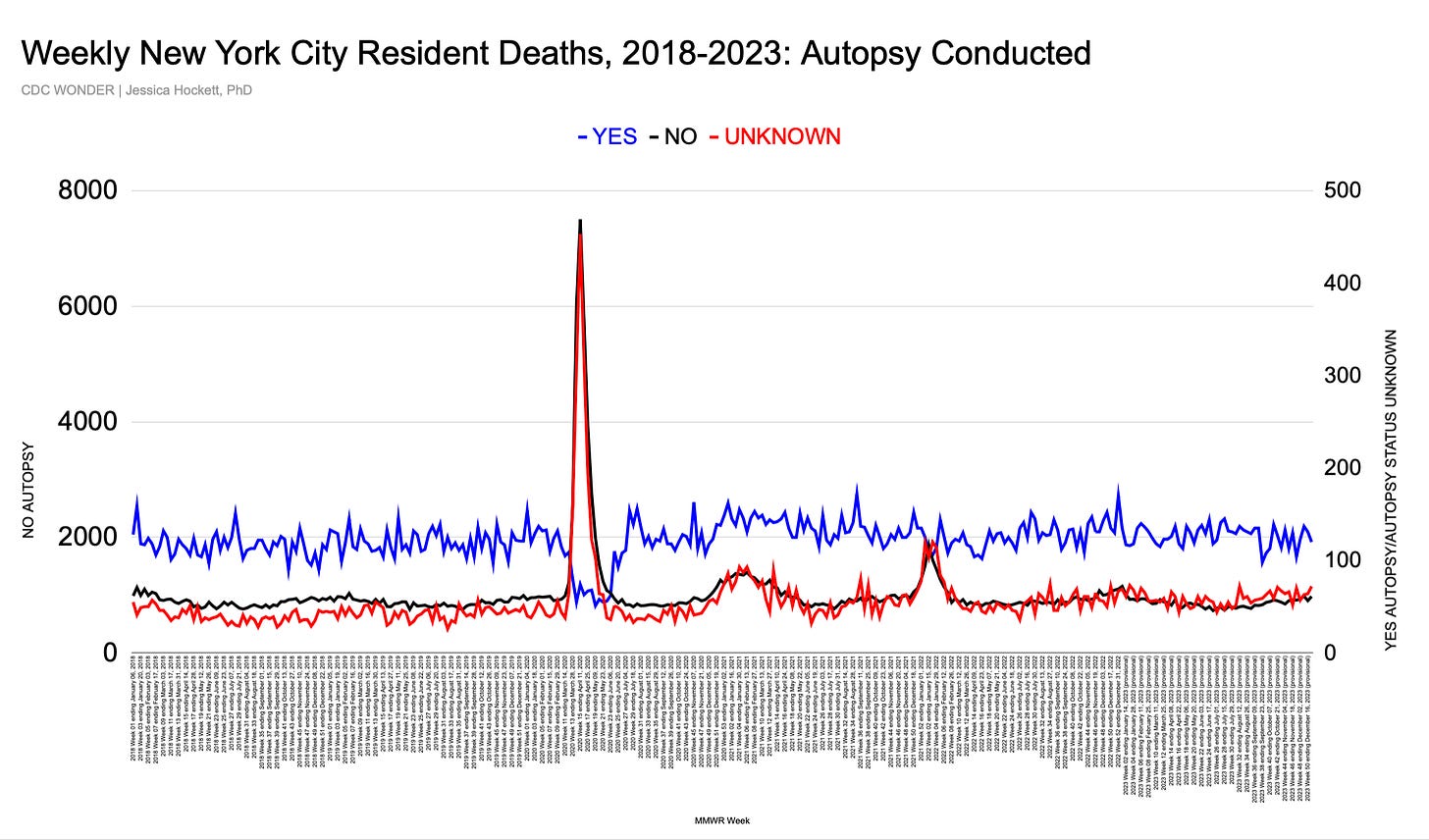

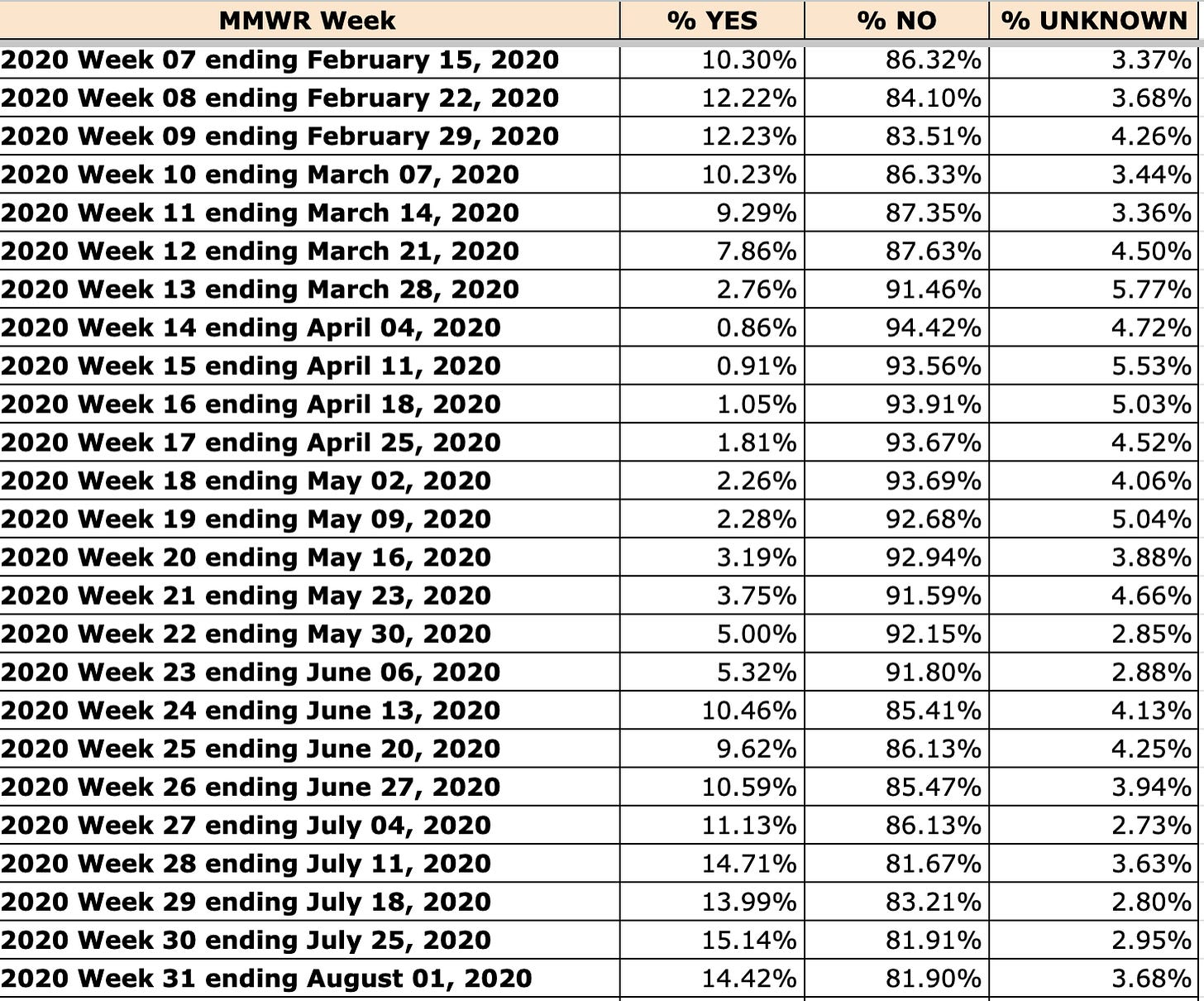



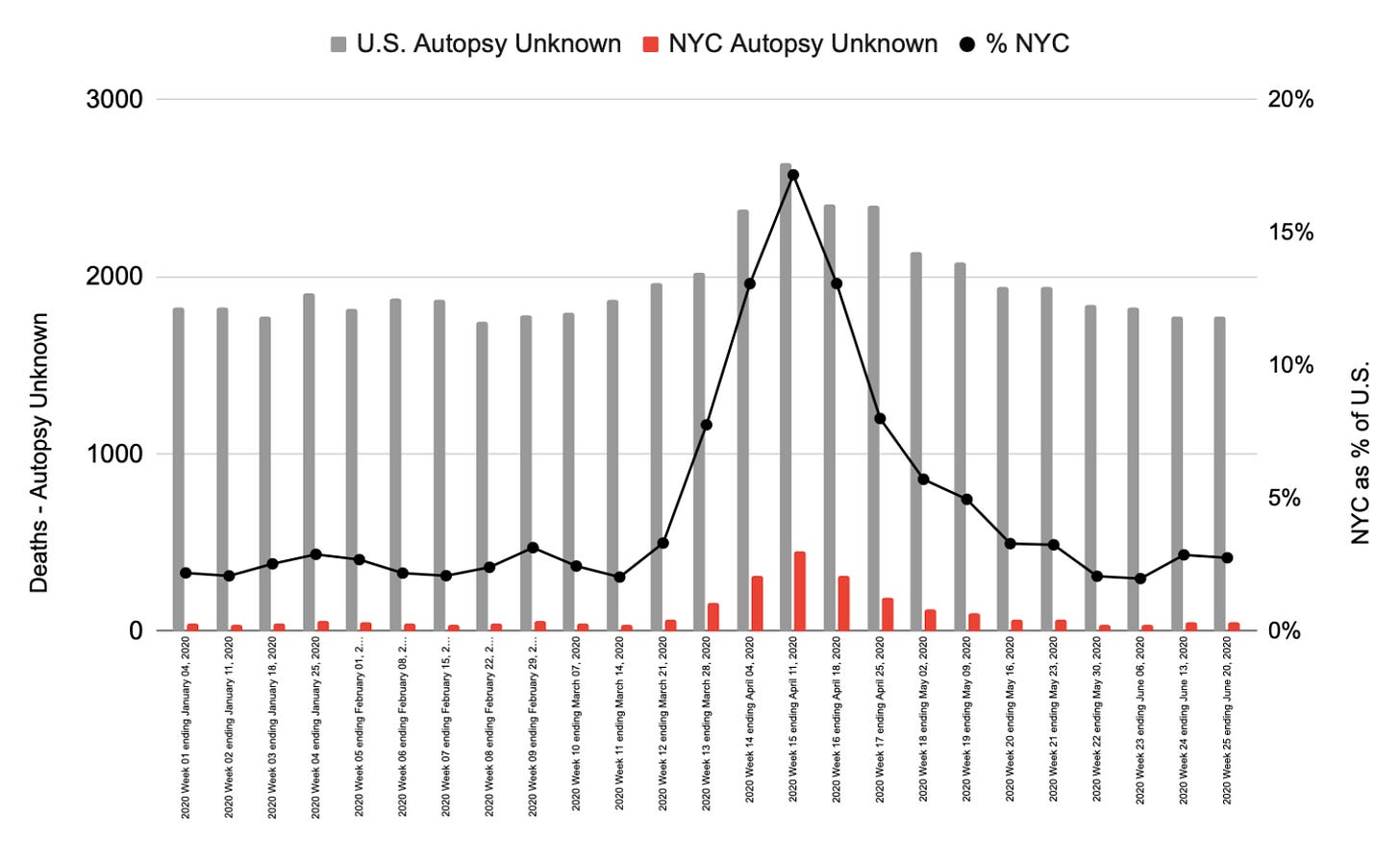

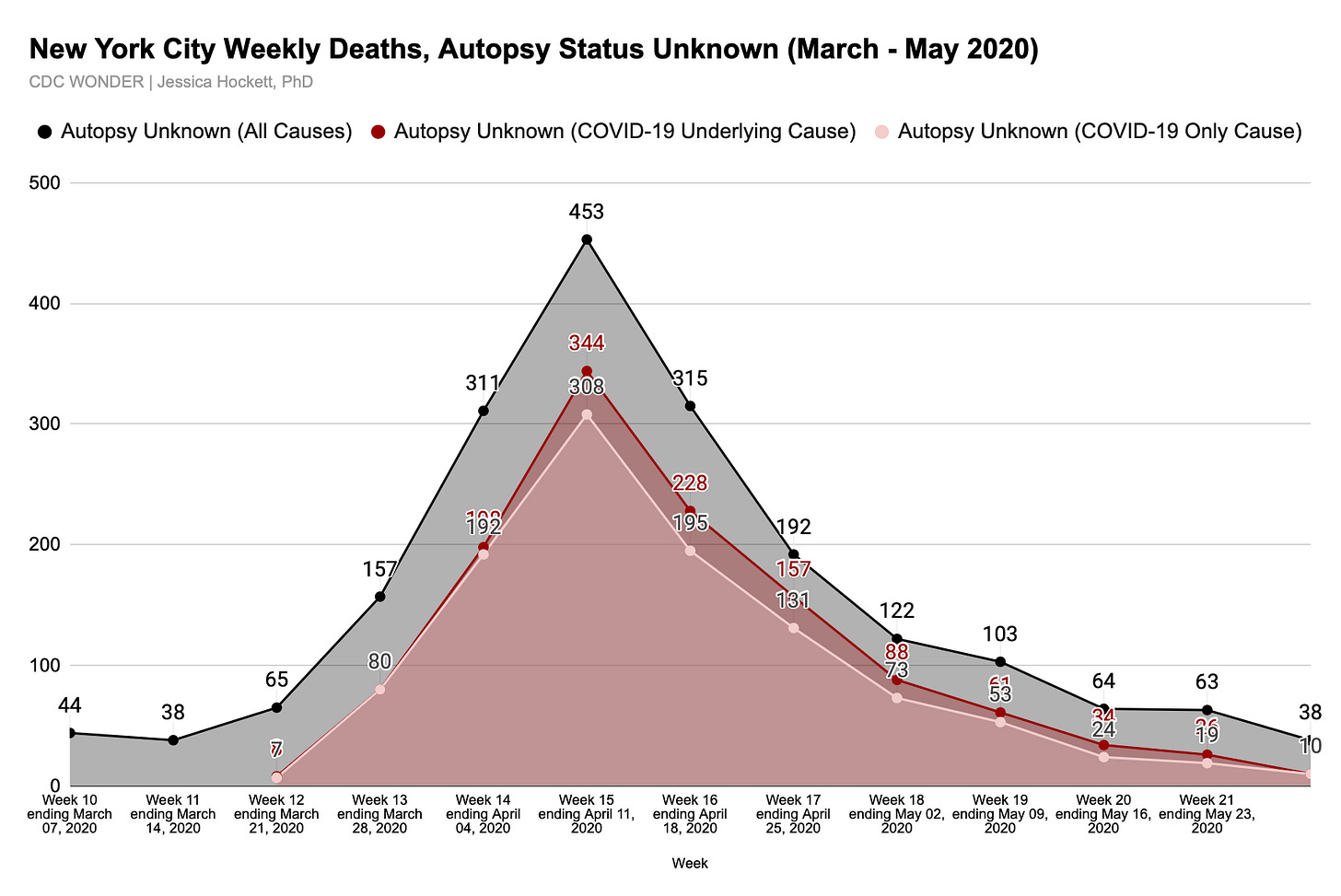

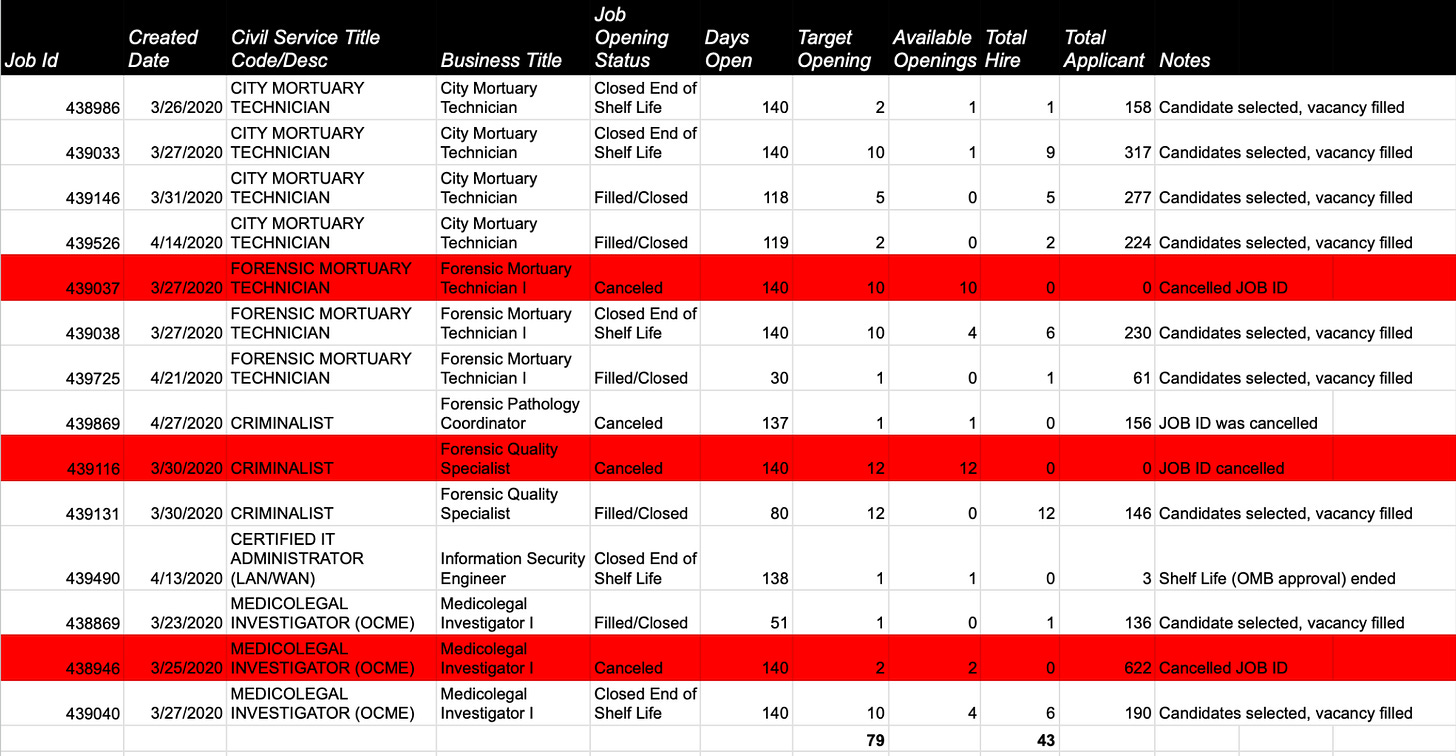
Great piece, Jessica. As I've posted before, you have a world exclusive on a scandal nobody else is investigating. You've identified myriad strange/non-sensical occurrences that, apparently, don't seem strange to anyone else ... or worth the effort to get honest answers. Thanks for your efforts.
Picking up on Jessica's point about being puzzled by the “official” explanation for autopsies coming to a near-halt": there should've been enough surge capacity to process bodies, given all the federal aid that was going to New York in spring 2020. You'd think coroners and forensic labs from elsewhere in the U.S. would've come into the area to help and make investigations of the causes of death. Other medical personnel were coming into the area.